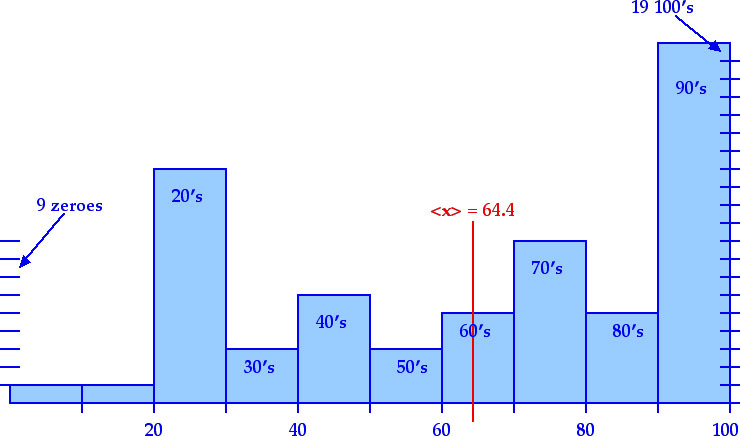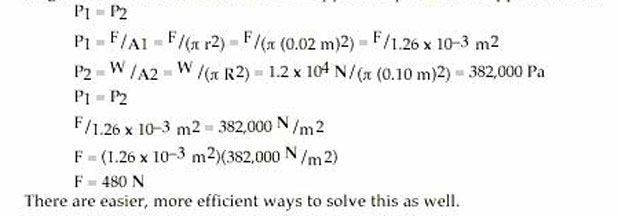
PHYsics 1151
Exam 3
November 14, 2005
![]()
| Calendar Page | Old Exams |
![]()

Comments from my soapbox: With thirty-nine scores of 90% and above, including nineteen 100's, this was clearly an easy test! However, there were also nine zeroes! That's terrible. The "equation sheets" you make out should help with anxiety or increase confidence. The "equation sheets" do not provide an alternative to understanding the material -- understanding the ideas and principles involved! This is a three-hour course; it is still probably impossible to survive the course with less than six hours a week in homework and study outside of class. Homework remains vital to surviving the course! All the questions on Exam 3 had come directly from the homework (Exam 2 was all "new" questions that I wrote without consulting previous notes). Be prepared. Read the textbook (that's the single best source). Work the homework! Study previous exams. Study the worked examples in the textbook.
![]()
| Calendar Page | Old Exams |
![]()
1. A lightweight, uniform pole is 6 m long and is attached by a pivot at one end to a wall. The pole is held at an angle of 30° above the horizontal by a horizontal guy wire attached to the pole 4.0 m from the end attached to the wall. A load of 600 N hangs from the upper end of the pole. Find the tension in the guy wire and the components of the force exerted on the pole by the wall.

From the first condition of equilibrium, we have
But that really means
| |
|
|
| |
|
|
| |
|
[ The vector nature of forces is important. There is no way you should ever be adding Fx and Fy as scalar components. That makes no sense at all! ]
[ The weight of an object, the force of gravity down on some mass, is w = mg. The mass m will be measured in kg and the weight, in N (newtons). This is a lightweight boom and no mass was given. Its mass is negligible. The load of 600 N already is a force. Mupliplying 600 N by 9.8 m/s2 is meaningless! ]
More information is needed to solve for T and Fx. We can get that information from the second condition of equilibrium. Before we start to calculate torques, we must decide on the reference point about which we will calculate those torques. If we choose the lower, left end of the pole, there are two forces, Fx and Fy, that will have zero torque. That will reduce the number of terms in all of our equations. Therefore, that is a good choice for the origin or reference point or axis of rotation.
Fx:
![]() = 0 (since r = 0 in
= 0 (since r = 0 in ![]() = r F sin
= r F sin ![]() )
)
Fy:
![]() = 0 (since r = 0 in
= 0 (since r = 0 in ![]() = r F sin
= r F sin ![]() )
)
T: ![]() ccw
= (4 m)(T)(sin 30°) = (4 m) T (0.50)
= (2 m) T
ccw
= (4 m)(T)(sin 30°) = (4 m) T (0.50)
= (2 m) T
600 N: ![]() cw
= (6 m)(600 N)(sin 60°) = (6 m)(600 N)(0.866) = 3118 m-N
cw
= (6 m)(600 N)(sin 60°) = (6 m)(600 N)(0.866) = 3118 m-N
![]() ccw means a counter clockwise
torque and
ccw means a counter clockwise
torque and ![]() cw means a
clockwise torque.
cw means a
clockwise torque.
![]() ccw
=
ccw
= ![]() cw
cw
(2 m) T = 3118 m-N
T = 1559 N
